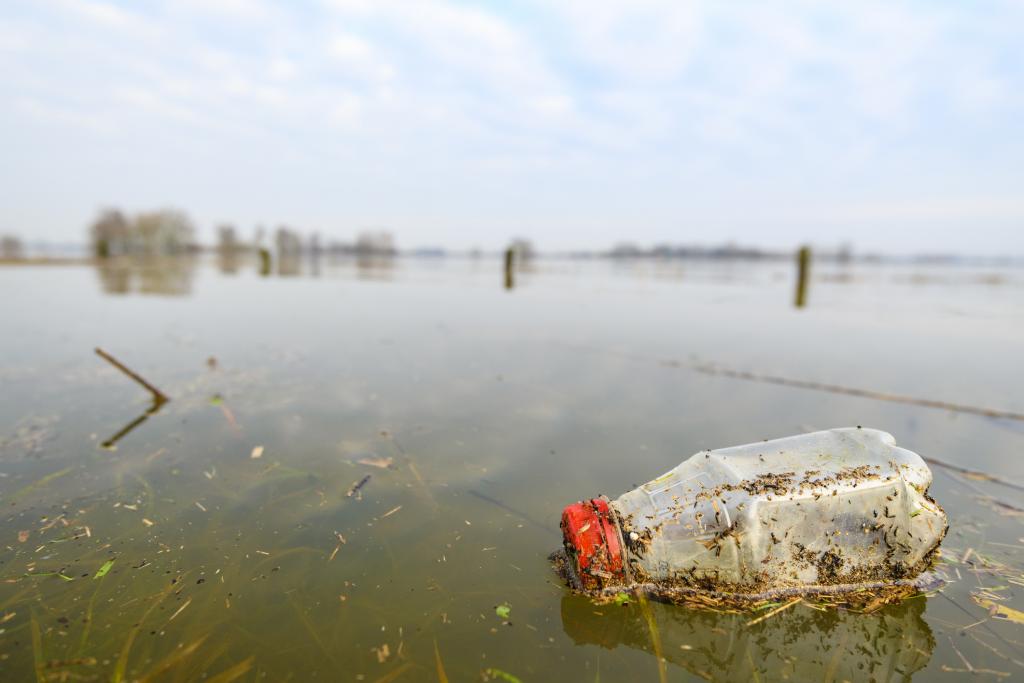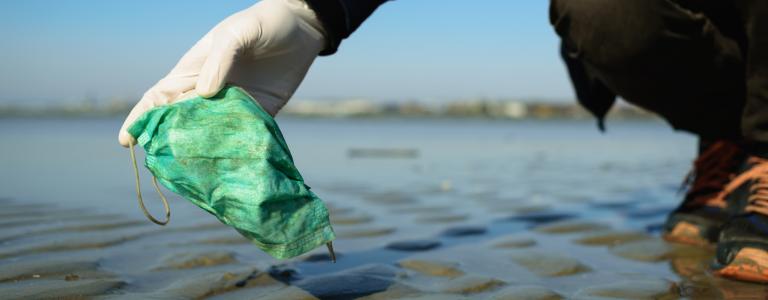COVID-19 Has Canada Using More Plastic. What impact will this have on our fresh water?
Policy-makers are facing pressure to reverse or suspend legislation on plastic waste and pollution in in order to accommodate an increased need for single-use plastics. But will these changes be temporary or long-lasting? How can Canada's leaders protect our fresh water without compromising our health and safety?
Plastics are one of the most popular materials in existence. They are durable, relatively inexpensive to produce, and versatile enough for use in a diverse range of products.
Here in Canada, less than 10% of plastics are recycled, contributing to over 3 million tonnes of plastic being thrown into landfills or into the environment each year. Over a third of plastics produced in Canada are for single-use packaging or products—such as plastic bags, take-out containers, and bottlecaps—which constitute one of the largest sources of plastics found in fresh water.
What Impact Do Plastics Have on Fresh Water?
Plastics are released into our freshwater systems in many different shapes and sizes, and through various means—including wastewater treatment plants, landfill leakage, storm drainage, agricultural runoff, effluent and scraps from industry, inadequate waste management procedures, and litter.

Over time, environmental conditions—such as wind, rain, waves, and sun—cause plastics to break down into smaller pieces (< 5 mm) called microplastics.
Over the past few years, the study of microplastics has grown immensely, but much is still unknown about their short- and long-term ecological effects. As an emerging threat to freshwater environments with potential human health implications, further scientific research on the sources, fate, and effects of microplastics is critical.
How Has COVID-19 Impacted Plastics Usage and the Health of Our Fresh Water?
As part of the changes to our daily life brought about by COVID-19, Canadians’ reliance on certain types of single-use plastics has increased. Policy-makers are also facing pressure to reverse or suspend legislation that would address plastic waste and pollution, such as Canada’s proposal to ban harmful single-use plastics by 2021.
For example, at the height of the outbreak, some provincial health officials advised against using reusable bags and containers in grocery stores, with several chains banning them outright in favour of plastic bags. Although many of these restrictions are now being lifted, it may still be a while before consumers return to reusable bags and coffee cups.
COVID-19 has also brought a new source of plastic pollution in the form of single-use personal protective equipment (PPE), such as masks and gloves. Single-use PPE is a necessary and effective public health measure, but these products are not always discarded properly and may end up as litter that enters our waterways. Indeed, a recent study identifies plastic face masks as a potential source of microplastic fibres in the environment. Although research is already underway to develop biodegradable or recyclable masks, even a temporary surge in plastic litter can lead to long-term impacts for freshwater environments.
What Needs to Happen Now?
First up, researchers at IISD Experimental Lakes Area have already proposed a whole-lake experiment (in this case, by carefully and safely adding microplastics and closely monitoring the ecosystem), to allow us to better understand the impacts on the whole lake and food web that it supports.

More than 50 years of existing data about the chemistry, biology, and weather patterns at the site will help us understand and validate what we discover. And once we know more about what microplastics do to our freshwater lakes and the aquatic life residing within, we can then work directly with governments and industry to develop relevant and effective policies and procedures that protect our precious freshwater resources from plastics pollution.
When it comes to larger policy changes to reduce the impacts of COVID-19 on plastic pollution in our fresh water, the Government of Canada should:
Move forward with the Canada-wide strategy on zero plastic waste: Canada should proceed with implementing its existing strategy and legislation on plastic waste reduction, including a ban on harmful single-use plastic items by 2021.
Provide educational resources to the public on more sustainable PPE use and disposal: Use social media and traditional marketing campaigns to raise public awareness about proper disinfection, reuse, and disposal of PPE to help ensure we do not produce excess waste and that it does not end up as litter in our environment, including fresh water.
Invest in research and innovation on plastic pollution in fresh water as part of sustainable recovery measures: Part of Canada’s action plan to ensure a green recovery from COVID-19 should include the implementation of financial programs and incentives for small businesses, entrepreneurs, and researchers to develop innovative and sustainable solutions to reduce and prevent plastic pollution in fresh water, as well as better understand its effects.
Support and develop sustainable plastic waste management systems: The federal government needs to work in collaboration with industry, provinces, territories, municipalities, and Indigenous governments to coordinate localized and harmonized waste management procedures, as well as invest in appropriate infrastructure and markets to help implement a circular economy for plastics within Canada.
You might also be interested in
Microplastics now pervasive in Great Lakes, with 90% of water samples surpassing safe levels for aquatic wildlife: new studies
Data spanning the last ten years reveal that the Great Lakes basin is widely contaminated with microplastics, with potentially dangerous consequences for the wildlife that live within.
Northwest Ontario Side Story: IISD Experimental Lakes Area Annual Report 2022-2023
This year's annual report is a celebration of all things creative at the world's freshwater laboratory, from the science to music, photography and theatre.
Freshwater connectivity can transport environmental DNA through the landscape
A new study conducted at IISD-ELA found that the movement of water between freshwater bodies can transport eDNA which complicates the question of how accurately it can be used to monitor species.
These nearly invisible organisms help clean Lake Tahoe's water. Here's how they do it
Plankton are not just a diabolical mastermind on a Nickelodeon show about a sponge who lives under the sea. Lake Tahoe is filled with them—the good kind. Tahoe native zooplankton are making a comeback in the more than 21-mile long lake, helping it look the clearest it has in 40 years. A comeback because until now, the microorganism's population significantly decreased after it's primary predator, the Mysis shrimp, was on the rise, according to previous Sacramento Bee reporting.
